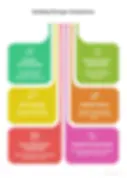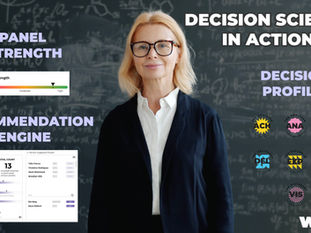
Blog Post

All for one and one for all. Sustainability can’t happen without stakeholder engagement. All stakeholder engagement will soon involve sustainability. Welcome to the new Circular Economy.
“Strategy & vision is key, and requires leadership to put this in business terms that the rest of the executive team can understand. If you can’t do this, you will be less effective.” - Dave Stangis, Chief Sustainability Officer, Apollo Asset Management, $785 billion Assets Under Management
Since the Industrial Revolution, economies have operated as if they are larger than the physical environments they operate within. The past 260 years has relied on unlimited natural resources, ensuring the competitive advantages for organisations has been determined in efficiencies, pricing and distribution.
In fact, the first lessons in Econ 101 don’t even reference the physical disruptions to supply chains that firms can experience while generating income from Factor Markets (Land, Labour, Capital, Entrepreneurship), nor the resulting pollutants emitted into the atmosphere during and following production:

This outdated economic model is quickly being replaced by corporations’ external stakeholders: customers, insurers, investors, the local community and government agencies. This is due to the environmental impacts on a company’s ability to generate revenues while being impacted by extreme weather events such as floods, fires, heatwaves, droughts and cyclones/hurricanes.

As a result, sustainability now permeates the entire organisation, from the Board and Executive Leadership Team through to the operations staff and customer-facing roles, whether acknowledged by all parties or not.
Strong internal stakeholder engagement is now of utmost importance. But who are these stakeholders and what do they do?

By choosing not to incorporate this more accurate economic model, leaders are increasing their company’s exposure to the financial implications of physical risks. These implications can include damage to assets and infrastructure, disruption of supply chains and operations, increased insurance premiums or even uninsurability, reduced revenue due to impacts on production or demand, increased operational costs (such as for cooling and water management) as well as the impairment or reduction of asset valuations. As more Planetary Boundaries are crossed, this is becoming a critical fiduciary and legal responsibility of office-holders.

These leaders are also exposing the organisation to the impacts of transition risks. These can include being unprepared for changes in government policy and legal responsibilities, the disruptions and costs of not deploying cleaner technologies amid volatile oil prices and supply, shifts in overall market dynamics due to the changing preferences of consumers and investor sentiment, as well as reputational risks due to inaction resulting in the loss of social licence, an inability to attract and retain staff and, potentially, facing consumer boycotts.

‘Net Zero Market Lockout’
Joe Rozza, Chief Sustainability Officer at Ryan Companies, has stated that companies yet to invest in decarbonisation because they don’t appreciate the importance to their business and the goods & services they put into the market, will start to feel significant commercial pressure. He believes not having a net zero commitment will become a vulnerability for an enterprise due to the expectation of carbon commitments resulting in businesses having to explain why they either only have a couple of years of reports/data, or why they don’t have any at all.
It’s Not All Doom And Gloom
It doesn’t have to be this slide into mediocrity, or worse, the end of business operations. There are multiple stakeholder engagement levers to be utilised when engaging with all levels of the business that will help companies future-proof their revenues, operations and employees.
What are the opportunities for businesses who incorporate sustainability into their core operating model?

Stakeholder Engagement Disruptions:
In order to achieve these revenue boosters, teams need to be implementing a clear stakeholder engagement roadmap for all levels of the organisation. This ensures that employees can see the benefits to both themselves and the organisation of acting, rather than as extra workload for no discernible reason or reward. If this is not proactively conveyed and embedded within incentive structures, resistance can take many forms.

If someone thinks climate change is a hoax, this doesn’t have to be a conversation about the environment. As already mentioned, there are many, many financial and non-financial risks for companies who don’t incorporate sustainability into their decision-making. This has a knock-on effect to individuals who have a bonus structure tied to revenue generation and operational efficiencies:

Stakeholder Engagement Roadmap
In order to avoid these negative consequences, an effective stakeholder engagement roadmap can ensure the right mission-critical priorities are focused on. By ensuring stakeholders don’t have to learn Sustainese, and by explaining ‘Why this, why now, why you’, stakeholders will be able to quickly see the co-benefits to themselves and the wider organisation.

Case Study: Unilever’s Sustainable Living Plan
Company Profile: Unilever is a British multinational consumer goods company with a vast portfolio of products spanning foods, beverages, cleaning agents, and personal care items. It operates globally with millions of employees.
The Challenge: In 2010, Unilever launched its ambitious "Sustainable Living Plan" (USLP), aiming to decouple growth from environmental impact, improve health and well-being for a billion people and enhance the livelihoods of millions. For a company of Unilever's size and global reach, implementing such a transformative plan required more than just executive directives; it demanded widespread adoption and commitment from its diverse workforce across all levels and geographies. The core challenge was to shift mindsets, embed sustainability into daily operations and empower employees to be active participants in achieving these ambitious goals.
Unilever's Approach to Successful Internal Stakeholder Engagement: Unilever recognised that its employees were the most critical internal stakeholders for the USLP's success. Their strategy focused on integrating sustainability into the company culture, values, and individual roles:
Leadership Buy-in and Communication: From the CEO down, Unilever's leadership consistently championed the Sustainable Living Plan. They communicated a clear vision, setting ambitious targets and regularly reporting on progress. This top-down commitment signaled to employees that sustainability was a core business priority, not a peripheral initiative.
Integrating Sustainability into Business Units: Instead of creating a separate "sustainability department" in isolation, Unilever embedded sustainability targets and responsibilities within existing business units (e.g., R&D, Procurement and Marketing). This meant that employees' day jobs inherently included sustainability considerations, rather than becoming a "night job" of extra work.
Employee Education and Capacity Building: Unilever invested heavily in training programs, workshops, and internal communication campaigns to educate employees about the Sustainable Living Plan, its goals and their role in achieving them. This helped bridge the knowledge gap and fostered a shared understanding of sustainability concepts relevant to their work.
Empowerment and Innovation from Within: Employees were encouraged and empowered to identify sustainability opportunities within their own areas of work. This led to countless grassroots innovations, from reducing packaging waste on production lines to developing more sustainable product formulations. Initiatives like "Sustainable Living Ambassadors" programs further empowered employees to drive change locally.
Performance Management and Incentives: Sustainability metrics were integrated into performance reviews and incentive structures for relevant roles, ensuring that employees were recognised and rewarded for their contributions to Sustainable Living Plan targets. This aligned individual goals with organisational sustainability objectives.
Internal Collaboration and Knowledge Sharing: Unilever fostered platforms and forums for cross-functional teams to share best practices, discuss challenges, and collaborate on solutions. This broke down silos and created a sense of collective purpose around sustainability. For example, a packaging designer in one region could learn from a colleague's success in reducing plastic in another.
Outcomes and Impact: Unilever's comprehensive internal stakeholder engagement strategy yielded significant successes:
Deep Cultural Embedding: Sustainability became a fundamental part of Unilever's corporate culture and identity, influencing decision-making at all levels.
Innovation and Efficiency Gains: Employees' engagement led to tangible reductions in resource consumption, waste, and carbon emissions across operations, contributing to cost savings and new product development.
Enhanced Employee Morale and Attraction: Employees reported greater pride in working for a purpose-driven company, which in turn helped Unilever attract and retain top talent who were increasingly seeking employers aligned with their values.
Increased Agility and Resilience: A workforce deeply engaged in sustainability was better equipped to adapt to evolving environmental regulations, consumer preferences, and market demands, enhancing the company's long-term resilience.
Contribution to Business Growth: Brands with strong sustainability credentials (e.g., Dove, Hellmann's) often experienced faster growth, demonstrating the commercial benefits of internal alignment with the Sustainable Living Plan. This case study illustrates that for large-scale sustainability transformations, authentic and persistent internal stakeholder engagement, driven by leadership and integrated into the core business, is paramount to success.

Future-Proofing Business Through Integrated Sustainability
In an era defined by unprecedented environmental shifts and escalating stakeholder expectations, the traditional view of business operating in isolation from its physical and social contexts is rapidly becoming obsolete. As we've explored, the financial implications of both physical and transition risks are no longer theoretical; they are tangible threats to revenue, operations, and market viability. The concept of "Net Zero Market Lockout" underscores a future where sustainability commitments are not merely optional, but a fundamental pre-requisite for commercial relevance and competitive advantage.
However, this critical juncture is not merely about mitigating risks. It presents an immense opportunity for proactive organisations to utilise empathic stakeholder engagement to unlock new avenues of growth, enhance brand reputation and attract top talent. The path to seizing these opportunities lies squarely in effective, integrated stakeholder engagement. By breaking down internal silos, communicating sustainability in the language of business drivers, and empowering every employee to see their role in this transformation, leaders can cultivate a resilient, future-ready enterprise.
Ultimately, embedding sustainability into the core operating model is not just an environmental imperative: it's a strategic business imperative. It's about ensuring long-term prosperity, maintaining social license, and thriving in a volatile economy. The time for businesses to embrace this shift, with stakeholder engagement at its heart, is now.
-- Dan Leverington is the Managing Director of The Ocelli Group, an end-to-end partner in sustainability strategy and compliance. He works with leadership teams to navigate the complexities of increasing commercial pressures, build resilient business models and create lasting value.





